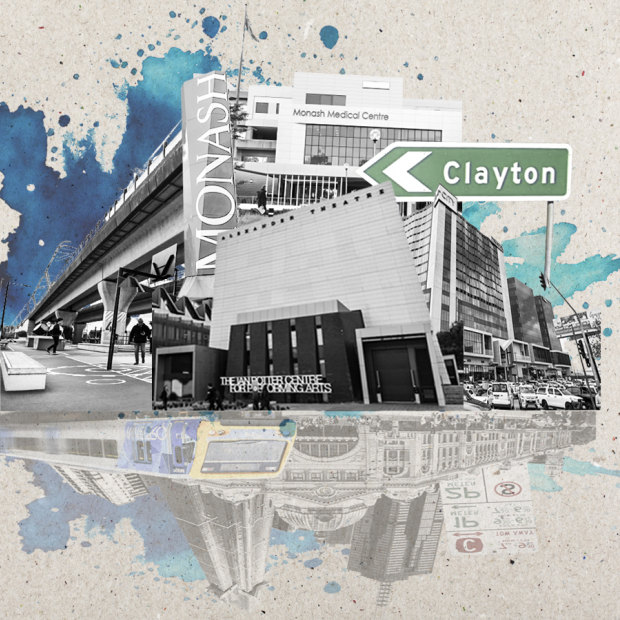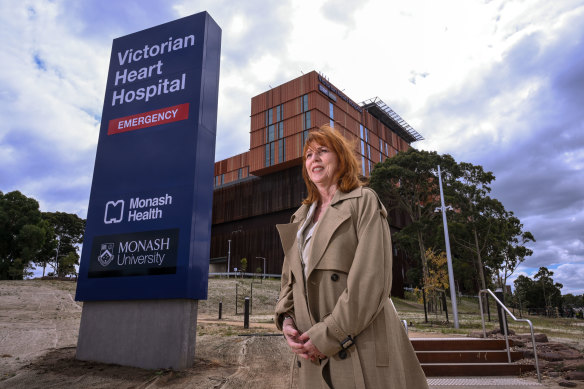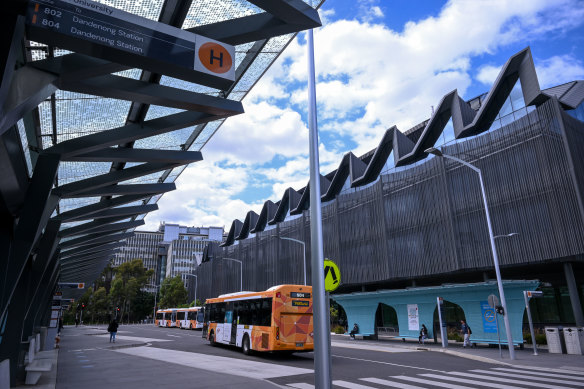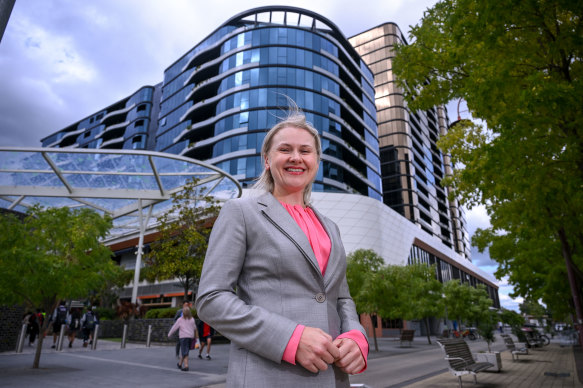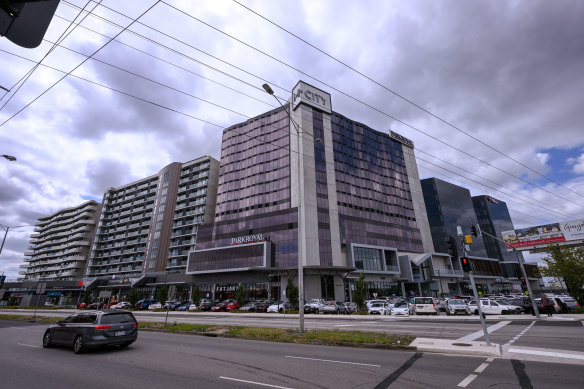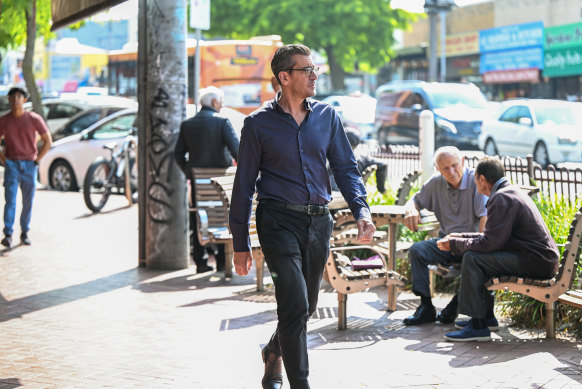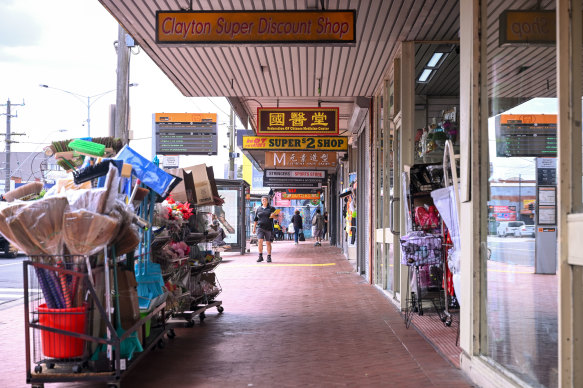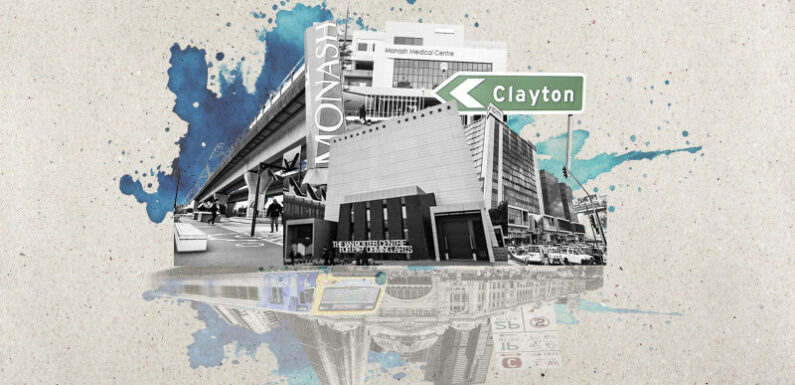
By Sophie Aubrey
Illustration:Credit:Jamie Brown
It’s a bustling business centre for 94,000 jobs and a hub for the growing health, technology and science sectors, but there’s not a CBD-style high-rise in sight.
As the state’s second biggest employment centre, the jobs precinct surrounding Monash University in Clayton, 18 kilometres from the CBD, is a sprawling landscape made up of lower density buildings, wide arterial roads and gum trees. Walking end to end could take you an hour – double the time needed to walk from Parliament House to Southern Cross Station.
But despite challenges with its spread-out footprint, as well as limited transport options and slow residential development, it’s shaping up as Melbourne’s greatest hope for a second CBD.
In the Second CBD series, The Age is exploring three of metropolitan Melbourne’s best options for secondary CBDs – Clayton, Box Hill and Sunshine – decades after planners started plotting how to decentralise the city. Selected in consultation with experts, these locations are middle suburbs accessible to populous outer and inner parts of Melbourne, and sites of major transport infrastructure projects. They show promising signs of development and have been previously identified for their growth potential.
‘No island of skyscrapers’
Plans for setting up other second cities, in suburbs such as Dandenong and Werribee, have come and gone, in part because of waning interest from changing governments. But Clayton’s secret weapon may be that its greatest advocate, Monash University, isn’t going anywhere, and continues to thrive as more than an education hub.
The growth of the Monash employment precinct is exposing something of a divide in the suburb, where the northern end’s reinvention is unrecognisable to the south.
Monash University vice-chancellor Margaret Gardner says the academic institution started to seriously pitch its wider precinct as a potential second city to government about 10 years ago.
Monash University vice-chancellor Margaret Gardner outside the Victorian Heart Hospital in Clayton.Credit:Eddie Jim
In its determination to be at the centre of a successful city, the university is leasing land to major businesses and promising start-ups, and it’s investing up to $250 million a year on infrastructure.
Organisations including the CSIRO, Moderna, the new Victorian Heart Hospital, the Australian Synchrotron, Monash Health, Woodside Energy, Telstra and Lockheed Martin earlier in March formed the Monash Precinct Network to foster its growth.
“It’s been building, and it’s now getting an accelerating momentum,” Gardner says.
“We can’t expect government has to think up everything. It behoves us as an institution to work with others and talk about the possibilities that are here … We are there for the long haul.”
She says high-rise buildings are not the only way to configure a CBD.
“This city won’t look like an island of skyscrapers,” Gardner says.
“It may be that it’s slightly lower density, it may feel greener, and it may feel you have more space around you. Not every city should look the same.
“The point about a city is: how do you bring together the series of services to allow you to do most of what you want to do in a relatively contained radius?”
Transport upgrades
Monash Council mayor Tina Samardzija believes Clayton is already playing the role of a second city.
“A lot of other suburbs have tried. It might be the university was the spark of the match that led to all this happening,” she says.
Clayton falls short on public transport options, with workers and students either forced to drive, use unreliable buses, navigate gnarly roads by bike or on foot, or travel via Clayton’s train station which is two kilometres from the boundary of Monash University.
Many commuters are forced to use the unreliable bus network to reach the Monash employment precinct.Credit:Eddie Jim
But after decades of lobbying for greater rail access, things are set to shift. Two stations on the Victorian government’s Suburban Rail Loop, which could eventually cover 90 kilometres from Cheltenham to Werribee, will be in Clayton: one next to the existing station to create a “super-hub”, and one within the Monash precinct. Early works on the eastern part of the loop have begun, with trains expected to start running on this section from 2035.
“The SRL is really important because it creates a link between multiple train lines … so you can arrive from multiple points in the compass,” Gardner says.
Deputy Premier and Transport Minister Jacinta Allan said the rail loop would give a crucial boost to the university and jobs precinct. “Monash has great potential because of the land that’s available there to support businesses,” she said.
Monash Council mayor Tina Samardzija in Glen Waverley, which has been the site of far more development than central Clayton.Credit:Eddie Jim
A trackless tram route, which would connect Caulfield to Rowville and wind through the Monash employment precinct, has also been promised with federal government funding.
Clayton’s residential population of 22,300 lags behind some key suburbs in the south-east. Unlike in nearby Glen Waverley, Clayton’s main strip near the station is devoid of apartment towers.
On the Princes Highway, M-City has been a major development, bringing more than 600 apartments and a new shopping centre, but most residential areas remain extremely suburban, made up largely of post-war homes and townhouses.
“It’s in its infancy,” says Samardzija.
M-City is a rare high-rise apartment development in Clayton, however it is on the Princes Highway away from the main activity centres.Credit:Eddie Jim
Samardzija grew up in the City of Monash and has watched the area transform from a place of outer suburbia with predominantly industrial jobs.
“We’ve got world-class health facilities, education facilities and such massive employment opportunities here that we don’t need the CBD any more.” she says. “The idea of Melbourne being centred around one CBD is just the past.”
While north of the busy Wellington Road is buzzing with innovation and investment, head south and it’s clear this development is yet to benefit the whole suburb.
Clayton Road Traders Association president Frank Golotta says the street should be the heart of the suburb, but it needs immense attention and financing to bring it to 2023 standards.
“It’s quite tired, with old red brick pavers and red barriers,” he says. “It’s not appealing and if we’re serious about Clayton being Melbourne’s second city, the place needs a facelift.”
Clayton Road Traders Association president Frank Golotta.Credit:Joe Armao
Golotta, who grew up in the area and set up the Clayton Hotel with his father in the early ’90s, says the area had been a “very blue collar, hard-working suburb” popular with migrants – initially from Europe, and then from Asia – who worked at nearby factories.
The missing link
Today, Clayton is being heavily shaped by the university, with students flocking to the suburb – the median age is 28 – making for a diverse community where 70 per cent were born overseas. A throng of Chinese, Malaysian and Indian eateries line Clayton Road.
There’s a lot of potential, Golotta says, but Clayton has often been treated as “the poorer cousin” to its neighbouring, leafy suburbs.
He says Clayton Road has missed out on development, is frequently used by large trucks, is not pedestrian or bicycle friendly and has limited parking.
“There’s been lots of talk about trying to create a village feel in Clayton, but that would mean diverting large vehicles.”
In 2020, Monash Council published a precinct plan to modernise central Clayton to keep pace with the growth of the Monash employment cluster. Much of this is in doubt because the state government will have planning controls over the land surrounding its Suburban Rail Loop stations. “We would have liked to have retained that control, but I suppose there are bigger considerations at play,” Samardzija says.
The Clayton Road shopping strip, which locals say is in need of refurbishment if it is to be at the heart of a second city.Credit:Eddie Jim
Golotta says residents and traders have just recovered from the disruption of the level crossing removal at Clayton station, and they are now facing a decade of more chaos with the Suburban Rail Loop project.
The new station works will be across the road from Golotta’s pub. “I don’t think you can ever prepare yourself for [an extended period of disruption]. It’s scary,” he says.
Yet he is hopeful that the result will be worthwhile as it will make Clayton a major transport hub connecting commuters to three metropolitan rail lines and the Monash jobs precinct.
“We are in the heart of it, so it’s got to be brought along for the ride, or else it’s just going to be silly.”
Samardzija says there is a cohort of older people who will be opposed to change, but she says the council is trying to focus on quality development. It recently introduced a 7.61 per cent levy on new developments, with the funds to go towards improving open space.
“There will be some people that won’t like the change, but there are also lots in our community who are looking forward to more opportunities to live and work,” she says.
NEXT: The middle suburb that looks like a mini-CBD
The Morning Edition newsletter is our guide to the day’s most important and interesting stories, analysis and insights. Sign up here.
Most Viewed in National
Source: Read Full Article
